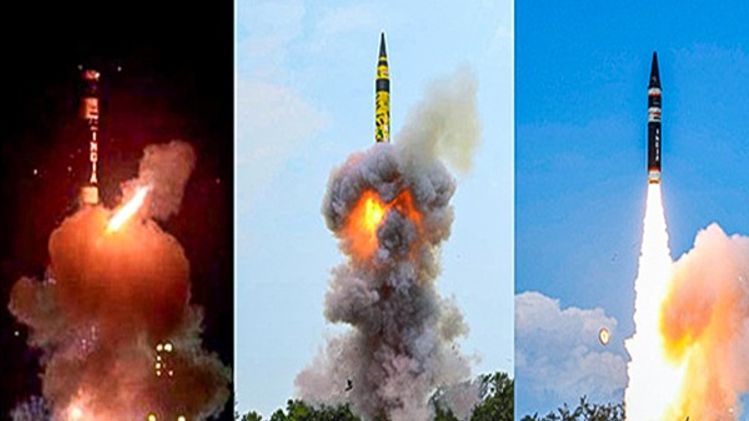India Conducts Successful Missile Tests to Enhance Strategic Capabilities
India has taken a significant step forward in strengthening its strategic and air defense capabilities by successfully test-firing two of its key short-range ballistic missiles—Prithvi-II and Agni-I. These tests were conducted from the Integrated Test Range in Chandipur, Odisha, under the supervision of the Strategic Forces Command. The trials validated all technical and operational parameters, reinforcing India’s ability to conduct precise and effective short-range strikes.
The test-firings took place on a Thursday, marking another milestone in the country’s efforts to modernize its military arsenal. The Prithvi-II is a surface-to-surface missile designed for tactical warfare, while the Agni-I is a medium-range ballistic missile capable of carrying nuclear warheads. Both systems are critical components of India’s deterrence strategy, ensuring readiness in various combat scenarios.
Advancements in Air Defense Technology
Just two days prior to the missile tests, on July 16, the Indian Army showcased a major breakthrough in air defense by intercepting and destroying two high-speed aerial targets at high altitude in Ladakh. This was achieved using Akash Prime, an upgraded version of the Akash Weapon System. The successful interception marked a significant achievement in India’s pursuit of indigenous defense solutions tailored for high-altitude operations.
Akash Prime has been specifically modified to operate effectively above 4,500 meters, where traditional systems often face challenges due to thin air and extreme weather conditions. The system features a new indigenous Radio Frequency seeker, which enhances its accuracy and improves target engagement. These upgrades have been made based on feedback from field units, ensuring that the system meets real-world operational demands.
Collaborative Efforts in Development and Testing
The trials in Ladakh were part of the First of Production Model firing, a crucial phase in the development process. This initiative involved collaboration between the Army Air Defence, the Defence Research and Development Organisation (DRDO), Bharat Dynamics Limited, Bharat Electronics Limited, and other industry partners. The joint effort highlights the growing synergy between the military, research institutions, and private sector in advancing India’s defense infrastructure.
Officials have stated that the success of Akash Prime is expected to accelerate its induction into the armed forces. This will significantly enhance India’s air defense capabilities, particularly in high-altitude regions like Ladakh, where maintaining air superiority is vital. The system’s performance during Operation Sindoor further underscored its effectiveness, reinforcing India’s commitment to self-reliance in defense technology.
Recognition and Future Prospects
Defence Minister Rajnath Singh commended the achievement, calling it a major boost to India’s preparedness in mountainous theatres. He emphasized the importance of such advancements in securing the nation’s borders and maintaining strategic stability. DRDO Chairman Samir V Kamat also acknowledged the efforts of the teams involved and confirmed that the missile system now meets the country’s high-altitude defense requirements.
With these developments, India continues to strengthen its defense posture through innovation and collaboration. The successful testing of advanced missile systems and air defense technologies reflects the nation’s growing technological prowess and its determination to remain self-reliant in the face of evolving security challenges.







